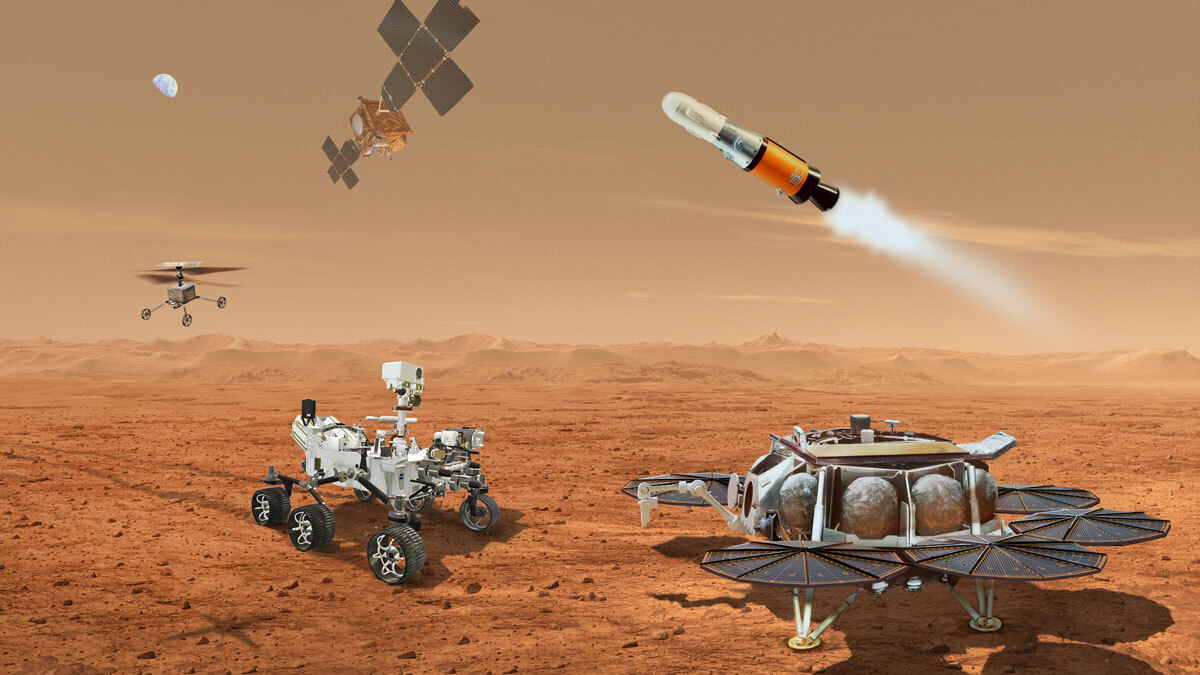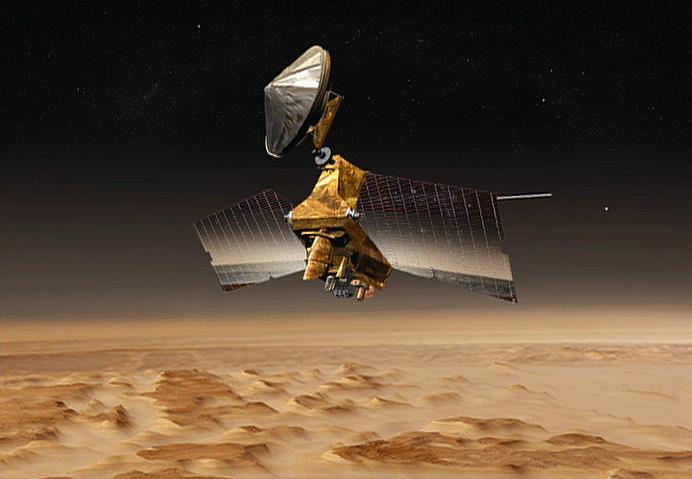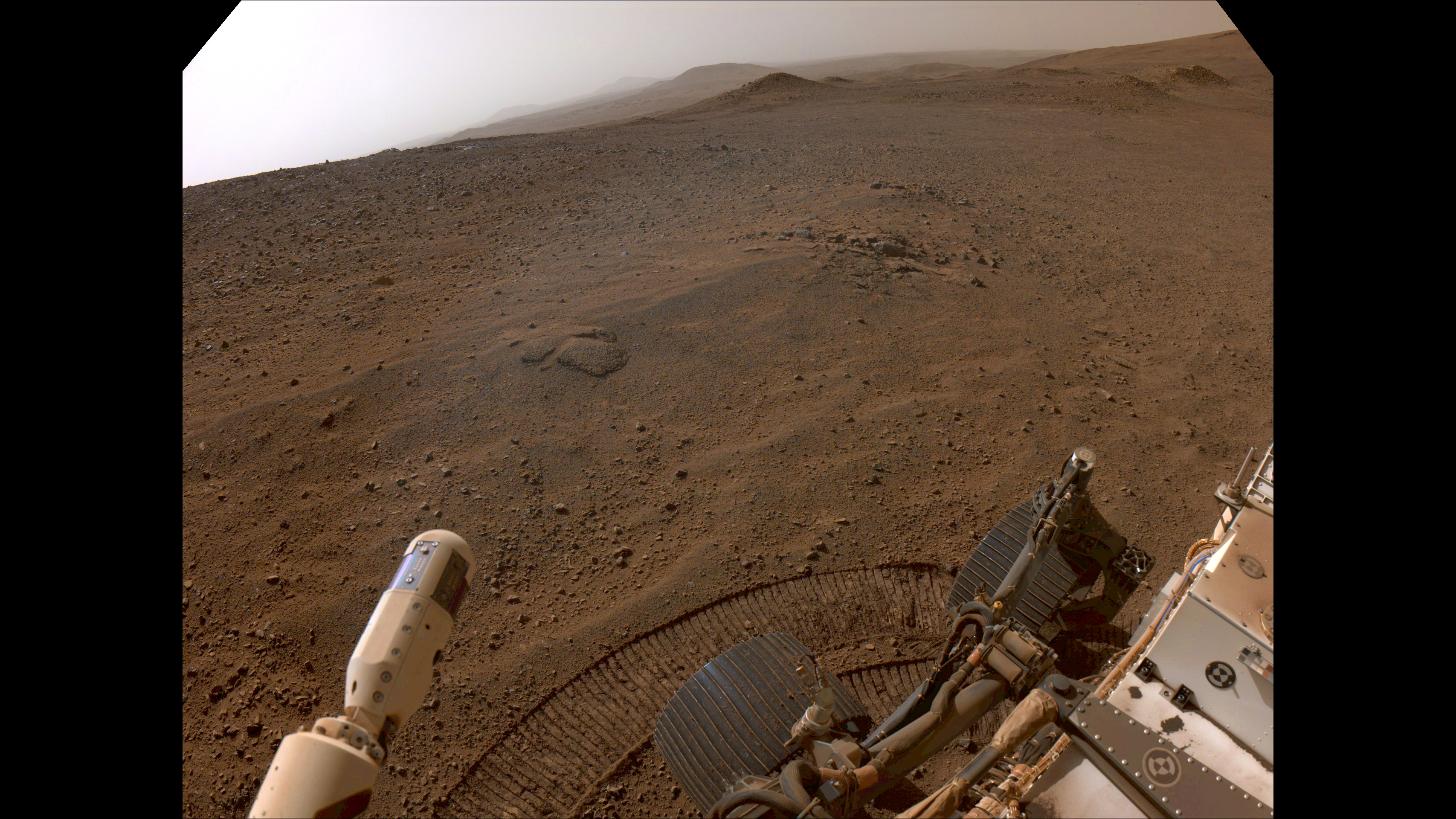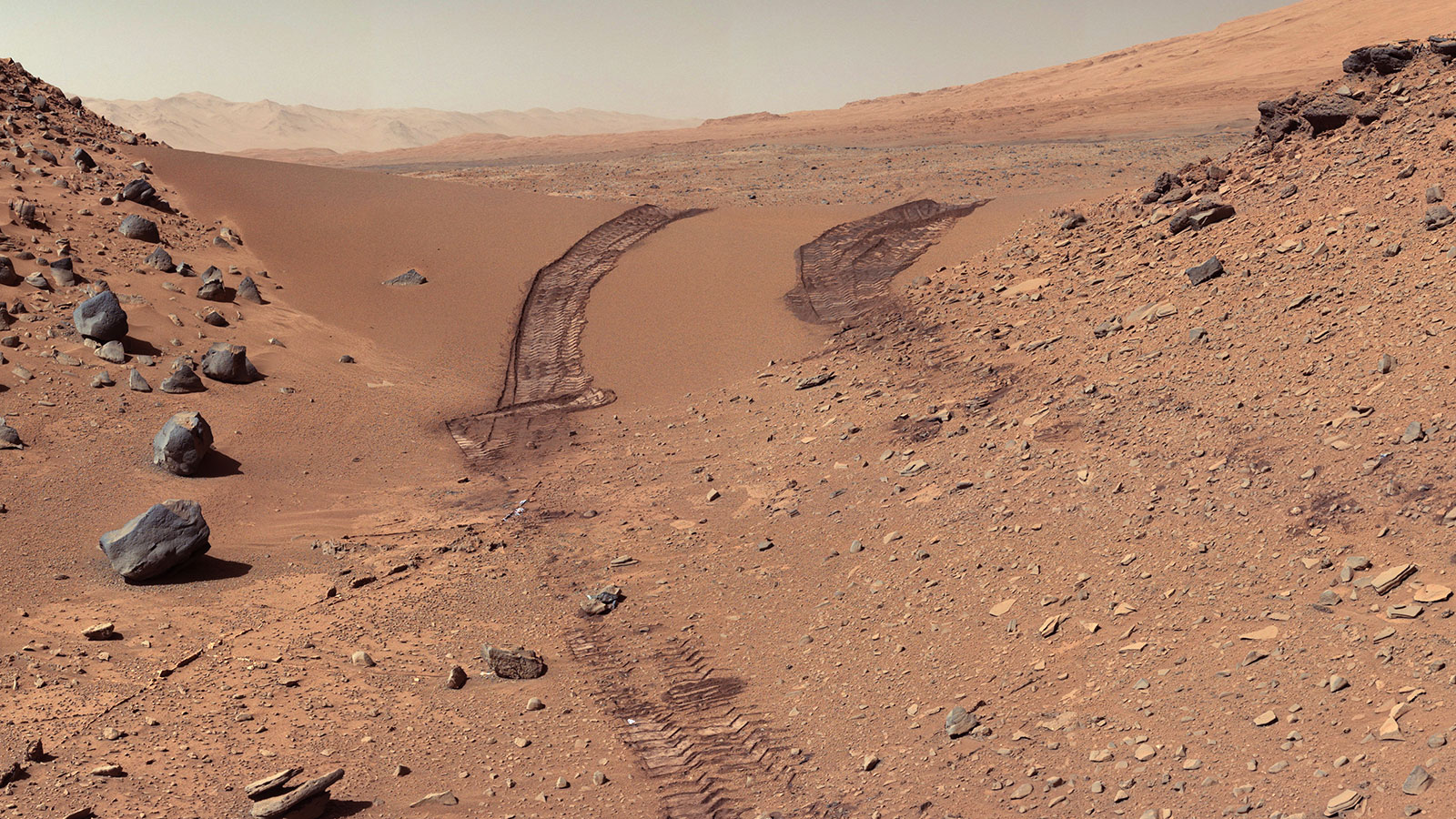The Mars Future Plan
NASA is reimagining the future of Mars exploration, driving new scientific discoveries, and preparing for humans on Mars.
Since landing its first rover on Mars in 1997, NASA has pushed the boundaries of exploration with increasingly larger and more sophisticated robotic explorers. Each mission builds on the lessons learned from the Red Planet, leading to breakthroughs in technology and our understanding of Mars. From the microwave-sized Sojourner to the SUV-sized Perseverance—and even taking flight with the groundbreaking Ingenuity helicopter—these rovers reflect decades of innovation and the drive to answer some of science’s biggest questions.
How We Explore Mars
To discover the possibilities for life on Mars, NASA uses science-driven robotic missions enabling us to explore Mars in ways we never have before.

Mars 2020: Perseverance Rover
The Mars 2020 mission Perseverance rover is the first step of a roundtrip journey to return Mars samples to Earth. (2020-present)

Mars Sample Return
NASA and ESA are planning ways to bring the first samples of Mars material back to Earth for detailed study. (Launching NET 2027)

Curiosity Rover
Curiosity is investigating Mars to determine whether the Red Planet ever was habitable to microbial life. (2011-present)

Mars Reconnaissance Orbiter
MRO explores the planet's atmosphere and terrain from orbit. It is also a crucial communications hub.
Mars News and Features
Keep Exploring










